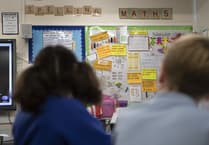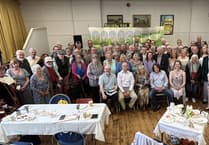SATURDAY (June 27) was the first annual Armed Forces Day, a day that has been dedicated to all those who have served in the Army, Navy or Air Force, both full time and as reservists.
It offers the chance for people to show that they recognise the unique demands that are placed on our service men and women.
The only parade in Cornwall on Armed Forces Day itself was held at the Davidstow Airfield and Cornwall at War Museum with a parade of eight standards, cadets and various service associations representing all three armed services.
WO John Beale, RAF retd, was a very efficient parade marshall. After the parade the Last Post was played by bugler Graham Martin from Penzance.
In his address museum owner, Steve Perry referred to the dictionary definition of 'veteran' and said that service men and women, irrespective of gender are all prepared to make the supreme sacrifice and that whether it is a big or small war a bullet is just as lethal.
The day included the opening of a new exhibition to mark 100 years of the Royal Naval Air Service this year and Steve referred to Cornwall's historic Royal Naval Air Stations at Mullion, Falmouth, Padstow, Bude, Treligga and St Merryn all of which are displayed at the museum.
The exhibition was officially opened by Cornish WW2 Fleet Air Arm pilot Lt Cdr Joe Mills from St Day who arrived at the museum in a Bentley chauffered by Lt Cdr Peter Sheppard AFC, RN.
Joe is 94-years-old this year and on being led in to see the new exhibits by the museum's co-owner Sheila Perry said he was always delighted to follow an attractive blonde!
He added that the pleasures of the day were such that would add 10 years to his life although the bottle of straight malt whisky that was presented to him may cancel this out.
Lt Cdr Peter Sheppard AFC, RN presented the museum with the nose cone of an RAF Hawk aircraft. On 29 July1983 whilst leading a 'tail chase' Lt Cdr Sheppard's aircraft had been hit by another Hawk. The collision removed the aircraft's nose section, including the wheel, rendering it unable to land. The crew ejected over the sea and the aircraft ditched off the North Devon coast. The nose cone will be on display in the new Royal Naval Air Service building at the museum.





Comments
This article has no comments yet. Be the first to leave a comment.